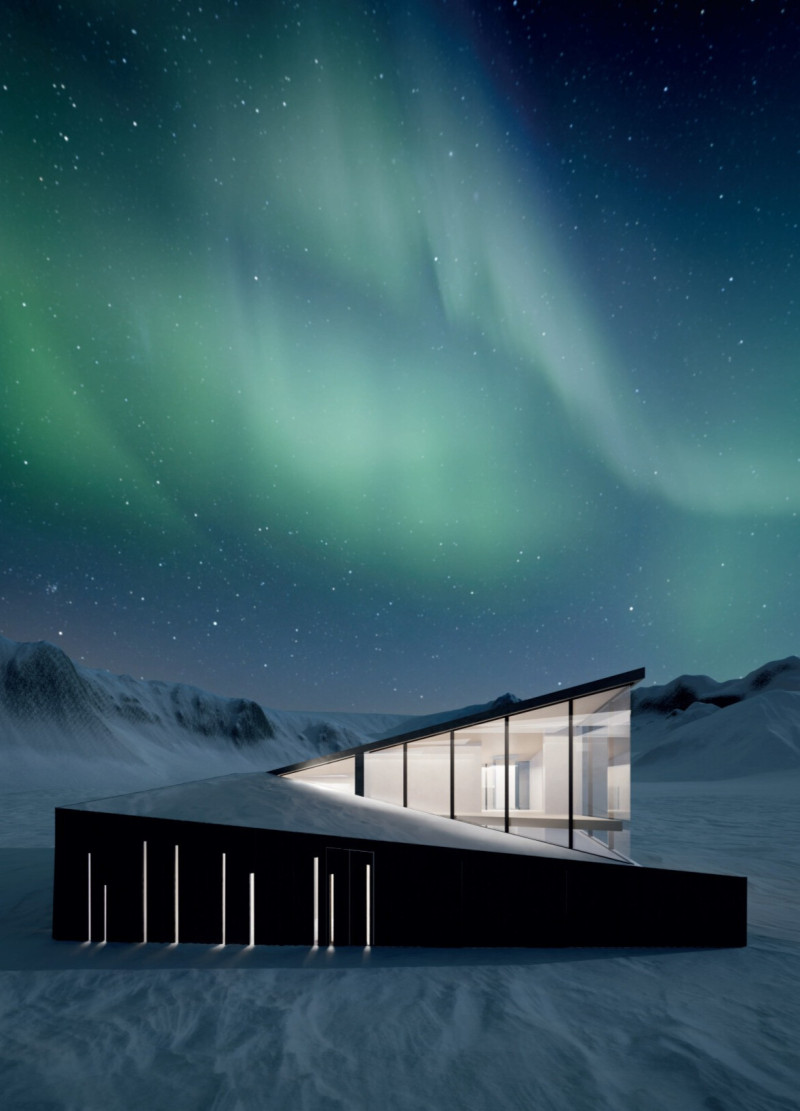5 key facts about this project
The design emphasizes a harmonious relationship with the natural landscape, effectively blurring the boundaries between indoor and outdoor spaces. Large expanses of glazing allow for abundant natural light and promote visual connections with the exterior, enhancing the user experience. The strategic placement of windows invites views of the landscape, making the natural surroundings an integral part of the living experience.
Functionally, the project is designed to accommodate a variety of activities, emphasizing flexibility and adaptability. The open floor plans encourage a fluid movement between different areas, fostering social interactions among users while ensuring privacy when needed. Common areas are thoughtfully delineated, providing spaces for both collaboration and retreat, which caters to diverse community needs. The careful organization of spaces reflects a deep understanding of human behavior and interaction, demonstrating a commitment to user-centered design.
Materials play a crucial role in the project, contributing to its overall aesthetic and functional performance. A combination of sustainable and locally sourced materials not only reduces the environmental footprint but also enhances the building's connection to its locality. The use of natural wood, resilient concrete, and weather-resistant metals provides durability while ensuring that aesthetic quality is maintained throughout the project. Textural contrasts between materials add depth and interest, creating a visually rich environment that resonates with the principles of contemporary architecture.
The project also incorporates several unique design approaches that set it apart from traditional architectural practices. One noteworthy aspect is the emphasis on passive design strategies aimed at optimizing energy efficiency. The building’s orientation and roof overhangs are designed to maximize sunlight during winter months while providing shade in the summer, minimizing reliance on mechanical heating and cooling systems. This thoughtful consideration of climate not only enhances the building’s sustainability but also promotes a comfortable interior environment year-round.
Landscaping is a vital element of the project, merging natural elements with architectural design. Native plants and sustainable landscaping practices are employed to reduce water usage and support local biodiversity, reinforcing the project’s commitment to environmental stewardship. Outdoor spaces are designed to encourage interaction, with intentional pathways and gathering spots that invite users to enjoy the landscape and connect with one another.
In exploring this architectural project, one can appreciate not only the aesthetic qualities of the design but also the underlying principles that guided its development. The balance of function and form, the thoughtful selection of materials, and the innovative approaches to sustainability exemplify the best of contemporary architectural practice. To gain a deeper understanding of this project, including its architectural plans, sections, designs, and overall architectural ideas, readers are encouraged to explore the complete project presentation. Each detail tells a story, and a closer look will reveal the intricacies that make this architectural endeavor noteworthy.


 Diomira Cuomo
Diomira Cuomo 























